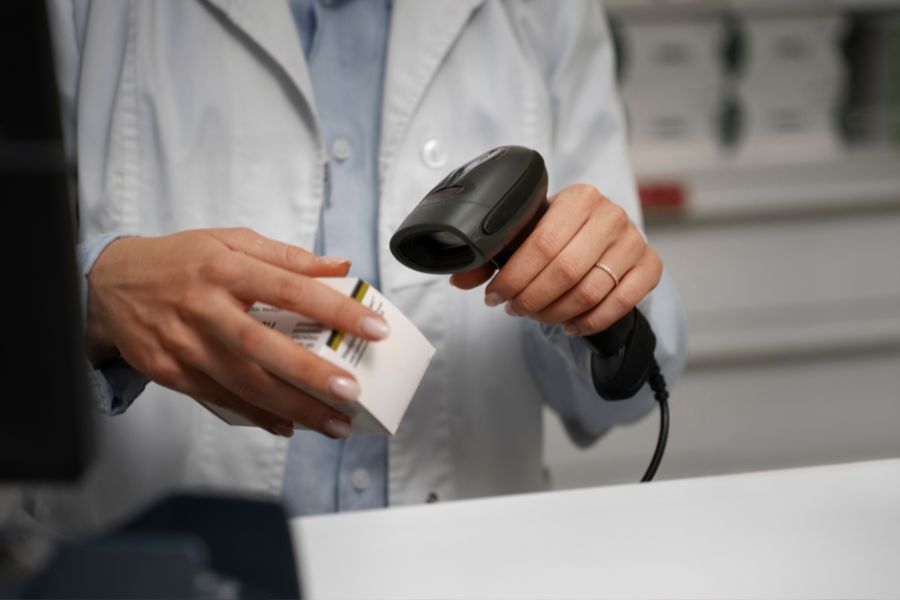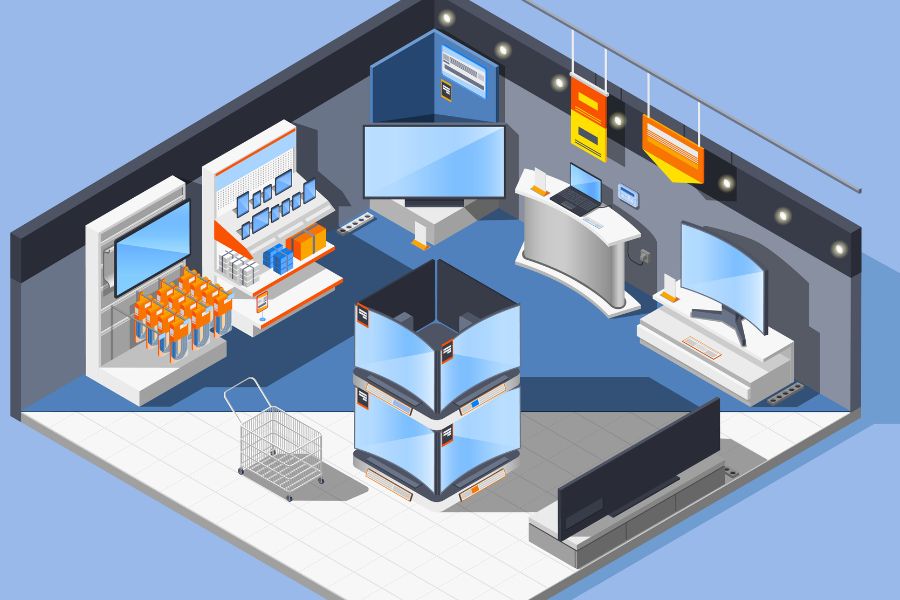In the fast-paced retail world, the Shopify Quickbooks POS integration is a catalyst for operational excellence. This article explores key steps and best practices to streamline sales, inventory, and financial data management. The goal is to minimize errors, gain insights, and navigate the retail landscape with precision and efficiency.
Overview of QuickBooks
QuickBooks is a renowned financial management and accounting software developed by Intuit, offering a comprehensive suite of tools designed to streamline and simplify various aspects of business finances. Widely used across diverse industries, QuickBooks serves as a central hub for businesses to manage transactions, track expenses, generate reports, and ensure accurate financial records.
What is QuickBooks?
To understand more about Shopify Quickbooks POS Integration, firstly we need to understand QuickBooks. QuickBooks is a versatile software solution designed to address the complex financial needs of businesses. It provides users with a centralized platform for organizing financial data, automating key accounting tasks, and facilitating efficient financial management. Available in different versions, QuickBooks caters to businesses of all sizes, from startups to established enterprises.
Main Features of QuickBooks
- Bookkeeping and Accounting: QuickBooks excels in simplifying bookkeeping and accounting processes. Users can easily record transactions, categorize expenses, and reconcile accounts, ensuring accurate and up-to-date financial records.
- Invoicing and Payment Processing: Businesses can create professional invoices within QuickBooks and streamline the payment process. The software supports online payment options, making it convenient for businesses to receive payments and track transactions.
- Expense Tracking: QuickBooks facilitates efficient expense tracking by allowing users to categorize and monitor business expenses. Integration with bank accounts and credit cards ensures a real-time and accurate overview of expenditures.
- Payroll Management: A robust payroll feature within QuickBooks enables businesses to manage employee payroll seamlessly. It automates payroll calculations, and tax deductions, and generates paychecks, ensuring compliance with payroll regulations.
- Financial Reporting: QuickBooks provides powerful reporting tools, allowing users to generate a variety of financial reports. From profit and loss statements to balance sheets, these reports offer valuable insights into the financial health of the business.
- Inventory Management: Nearly half (48%) of supply chain management and transportation executives express the need to reassess their warehouse locations. That proves the importance of Inventory management. For companies handling inventory, QuickBooks provides comprehensive inventory management features, allowing users to monitor stock levels, establish reorder points, and efficiently manage inventory across multiple locations.
- Bank Reconciliation: QuickBooks simplifies the bank reconciliation process by connecting directly to bank accounts and credit cards. This feature ensures that financial records in QuickBooks align accurately with bank transactions.
- User Access and Collaboration: Multiple users can collaborate within QuickBooks, each with customizable access levels. This feature enhances collaboration by allowing team members to work on financial tasks simultaneously.
- Cloud Integration (QuickBooks Online): QuickBooks Online provides cloud-based accessibility, allowing users to access financial data anytime, anywhere. This is especially beneficial for businesses with remote teams or individuals who need on-the-go access.
- Tax Preparation: QuickBooks aids businesses in preparing for taxes by providing organized and accurate financial data. Users can export reports or integrate seamlessly with tax preparation software to streamline the tax filing process.
Why Should You Do Shopify Quickbooks POS Integration?
Shopify Quickbooks POS Integration proves to be a pivotal strategy for businesses aiming to streamline their operational processes and enhance overall efficiency. This integration ensures real-time data synchronization, including sales transactions, inventory levels, and customer information. As a result, businesses can bid farewell to manual data entry, significantly reducing the risk of errors that might accompany such processes.
Automation takes center stage, particularly in tasks like inventory management and order processing. This not only saves valuable time but also allows businesses to allocate resources more strategically, focusing on key areas of growth and development. The unified financial reporting capabilities of QuickBooks provide businesses with a comprehensive overview of their financial performance, combining data from both online and in-store sales.
Step-by-Step Guideline for Shopify QuickBooks POS Integration
To kickstart the Shopify Quickbooks POS Integration journey, the initial step involves connecting QuickBooks POS to your Shopify store. Ensure a smooth process by logging into your QuickBooks POS account, accessing the app marketplace, and installing the chosen Shopify integration app. Follow on-screen instructions for authentication, establishing a secure link between the platforms.
Step 1: Connect QuickBooks
Begin the integration process by establishing a connection between your Shopify store and QuickBooks Point of Sale (POS). Follow these sub-steps:
- Login to QuickBooks POS: Open your QuickBooks POS account and ensure you have the necessary administrative privileges.
- Access App Marketplace: Navigate to the app marketplace within QuickBooks POS and search for the Shopify integration app.
- Install Shopify Integration App: Install the chosen Shopify integration app and follow the on-screen instructions for authentication and connection to your QuickBooks POS account.
Step 2: Configure the settings
Once connected, proceed with configuring the integration settings to ensure a seamless flow of data between Shopify and QuickBooks POS. This step is crucial for establishing a reliable Shopify Quickbooks POS Integration that streamlines the exchange of information and facilitates efficient business operations.
- Mapping Data Fields: Configure the mapping of data fields between Shopify and QuickBooks POS. This includes product categories, tax settings, customer information, and other relevant data points.
- Customize Settings: Tailor the integration settings to match the specific needs of your business. This may involve setting default tax rates, currency preferences, and other business-specific configurations.
- Payment Gateway Integration: If applicable, integrate your preferred payment gateway with both Shopify and QuickBooks POS to ensure the smooth processing of transactions.
Step 3: Sync
With the connection established and configurations in place, proceed to synchronize data between Shopify and QuickBooks POS.
- Initiate Data Sync: Activate the data synchronization process. Depending on the integration app, this may involve manual initiation or setting up an automatic sync schedule.
- Monitor Sync Progress: Keep a close eye on the synchronization process. Ensure that sales transactions, inventory updates, and customer data are being transferred accurately between the two platforms.
- Address Sync Issues: In the event of any synchronization issues, troubleshoot and address them promptly. Common issues may include discrepancies in data mapping or connectivity problems.
- Test Transactions: Conduct test transactions on Shopify to verify that the integration accurately reflects sales, inventory changes, and customer data in QuickBooks POS.
- Review Reports: Utilize the reporting features of QuickBooks POS to review integrated data. This step ensures that financial reports encompass both online and in-store transactions for a comprehensive overview.
By following these step-by-step guidelines, businesses can achieve a successful Shopify QuickBooks POS integration, optimizing their operations for efficiency and accuracy.
Best Strategies for the Right Shopify QuickBooks POS Integration
Executing a successful Shopify QuickBooks POS integration requires a strategic approach to ensure accuracy, efficiency, and seamless operation. Here are some best strategies to achieve the right integration:
Establish Your Accounts Accurately
Establishing your accounts accurately is the foundational step in ensuring a successful and seamless integration between Shopify and QuickBooks. This involves setting up and configuring your accounts with precision and attention to detail on both platforms.
Pay careful consideration to the chart of accounts, tax settings, and other financial parameters to guarantee consistency and alignment between Shopify and QuickBooks. Accurate account setup serves as the bedrock for a smooth integration process, laying the groundwork for precise data synchronization.
Choose the Right Integration Method
To uphold the integrity of your financial records, it is crucial to implement regular checks to monitor the accuracy of data syncing between Shopify QuickBooks POS Integration. Periodically reviewing sales transactions, inventory levels, and customer information allows for the identification and prompt resolution of any discrepancies.
Whether opting for a third-party integration app or utilizing built-in features, the chosen method should align seamlessly with your business needs. A careful selection ensures that data flows smoothly between platforms, minimizing potential disruptions and allowing for a customized integration experience tailored to the unique requirements of your business.
Automate Data Syncing
Streamlining the integration process between Shopify and QuickBooks, especially in a Point of Sale (POS) environment, involves automating the syncing of data. By implementing automated processes, businesses can eliminate the need for manual entry and significantly reduce the risk of errors.
A seamless Shopify QuickBooks POS Integration enhances efficiency, allowing for real-time data exchange and accurate financial tracking, ultimately improving overall business operations.
This not only saves valuable time but also ensures that crucial information, including sales transactions, inventory updates, and customer details, remains consistently up-to-date across both platforms. The automated data syncing mechanism contributes to the overall efficiency and reliability of the integration.
Monitor Data Accuracy Regularly
To uphold the integrity of your financial records, it is crucial to implement regular checks to monitor the accuracy of data syncing between Shopify and QuickBooks. Periodically reviewing sales transactions, inventory levels, and customer information allows for the identification and prompt resolution of any discrepancies.
This proactive approach ensures that your integrated system operates seamlessly, providing confidence in the accuracy of the shared data. By consistently monitoring data accuracy, businesses can uphold the reliability of their financial records and address any issues promptly, contributing to the ongoing optimization of the integration.
Conduct Frequent Reconciliations
To ensure the consistency of financial records on both Shopify and QuickBooks, it is essential to schedule frequent reconciliations. This proactive approach involves systematically comparing and aligning data between the two platforms.
By conducting regular reconciliations, businesses can promptly identify and address any discrepancies, preventing potential issues from escalating. This meticulous process not only upholds the accuracy of financial records but also contributes to the overall reliability of the integrated system, fostering a seamless operational environment.
Use Reporting Tools for Insights
Harness the power of reporting tools available in QuickBooks to gain valuable insights into your business performance. Utilize these tools to generate comprehensive reports that encapsulate both online and in-store sales data. By leveraging these insights, businesses can make informed decisions and engage in strategic planning.
The detailed reports offer a holistic view of your financial landscape, empowering you to identify trends, assess performance, and optimize business strategies. Integrating reporting tools into your workflow enhances your ability to navigate the complexities of your operations, contributing to more informed and data-driven decision-making.
By incorporating these strategies into your Shopify QuickBooks POS integration process, you can establish a robust and reliable system. Accurate accounts, the right integration method, automated data syncing, regular monitoring, reconciliations, and insightful reporting collectively contribute to a seamless and efficient integration, ensuring the smooth operation of your retail management system.
Why Choose ConnectPOS for QuickBooks Shopify Integration?
Selecting ConnectPOS for your Shopify Quickbooks POS Integration brings forth a myriad of advantages, making it a standout choice for businesses seeking seamless and efficient retail management. ConnectPOS offers a user-friendly interface, ensuring accessibility for both front-end staff and back-end administrators. Its intuitive design minimizes the learning curve, facilitating a smooth adoption process.
Real-time data syncing is a hallmark feature of ConnectPOS, ensuring that information, including sales transactions, inventory updates, and customer details, is continuously updated between Shopify and QuickBooks. This eliminates delays, streamlining operations and maintaining up-to-the-minute accuracy.
ConnectPOS stands out for its seamless integration with QuickBooks, ensuring a cohesive flow of financial data between the point-of-sale system and the accounting software. The platform’s robust inventory management features help businesses keep track of stock levels, prevent overselling, and optimize the reordering process.
Notably, ConnectPOS supports multi-store management, making it an ideal solution for businesses with multiple locations. This feature centralizes control and monitoring of sales, inventory, and customer data across various stores, enhancing overall efficiency.
The platform’s offline mode is a valuable asset, allowing businesses to continue operations smoothly even in the absence of an internet connection. Once connectivity is restored, the system automatically syncs data with the online platform.
ConnectPOS places a strong emphasis on customer relationship management (CRM), enabling businesses to build and nurture customer relationships effectively. Access to customer data, purchase history, and preferences facilitates personalized service, loyalty programs, and targeted marketing efforts.
Security is a top priority for ConnectPOS in Shopify Quickbooks POS Integration, with measures in place to protect sensitive customer and financial data. Secure payment processing and compliance with industry standards ensure the safeguarding of business and customer information.
The platform is highly customizable, allowing businesses to tailor the system to meet their unique requirements. Whether specific features, reporting tools, or integrations are needed, ConnectPOS can be adapted to align with the distinct needs of each business.
ConnectPOS enhances the efficiency of retail operations through its comprehensive reporting capabilities. The integration with QuickBooks provides businesses with detailed insights into sales performance, customer behavior, and inventory levels, facilitating informed decision-making and strategic planning.
Conclusion
In essence, Shopify Quickbooks POS Integration streamlines retail management. Accurate accounts, optimal integration, automated syncing, and vigilant monitoring ensure seamless operations and precise financial records. Utilizing reporting tools yields valuable insights for informed decision-making, fostering efficiency, minimizing errors, and supporting strategic growth in retail businesses. If you require additional information or have any further inquiries, please contact us.
ConnectPOS is a all-in-one point of sale solution tailored to meet your eCommerce POS needs, streamline business operations, boost sales, and enhance customer experience in diverse industries. We offer custom POS with features, pricing, and plans to suit your unique business requirements.




